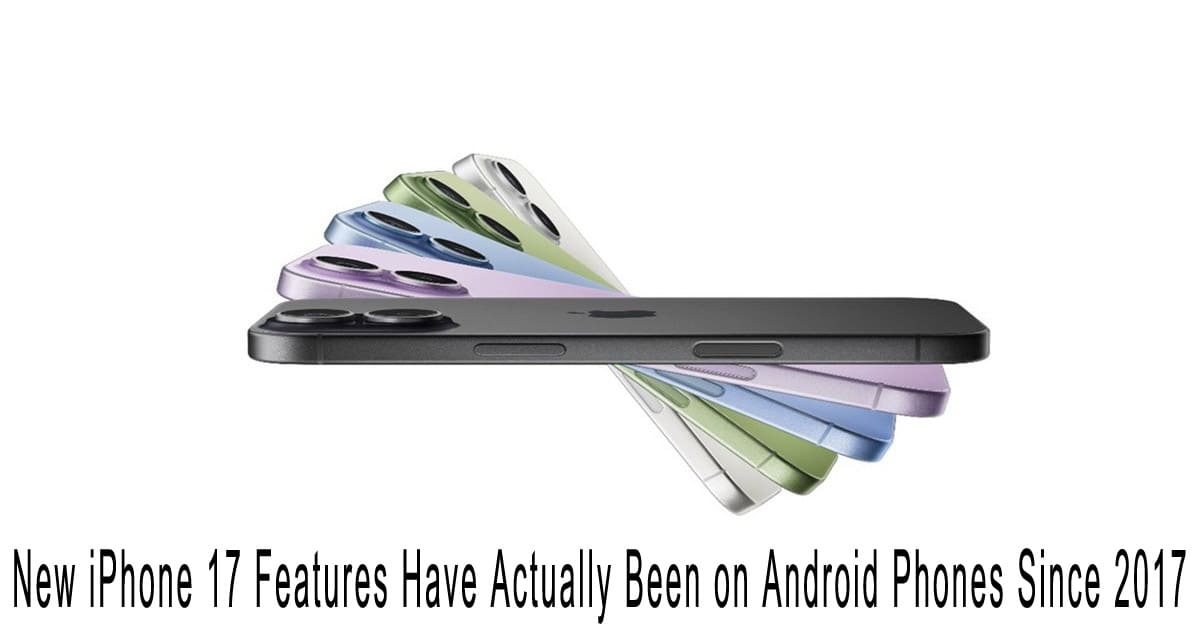
New iPhone 17 Features Have Actually Been on Android Phones Since 2017
New iPhone 17 Features Have Actually Been on Android Phones Since 2017 – Apple has just introduced the iPhone 17 with a lineup of “new” features that are being marketed as big technological leaps. But for long-time Android users, many of these features sound oddly familiar—and that’s because they’ve actually been around since 2017. https://chuebaerg.com
For tech enthusiasts, this comparison is fascinating. It reignites the old debate: who’s really innovating—Apple or Android?
New iPhone 17 Features Have Actually Been on Android Phones Since 2017 :
1. 120Hz Refresh Rate: Android Did It First
One of the biggest highlights of the iPhone 17 is its 120Hz ProMotion display. Smooth scrolling, crisp animations, and ultra-responsive touch sensitivity are certainly nice upgrades for iPhone users.
But if you’ve been following Android’s history, you’ll know that this isn’t groundbreaking. The Razer Phone, launched back in 2017, was the first smartphone to introduce a 120Hz panel. Soon after, brands like ASUS (with the ROG Phone series), OnePlus, and Samsung rolled it out to their flagship devices.
So while Apple is presenting it as a premium feature, Android users have been enjoying high refresh rate screens for nearly a decade.
2. Dual Video Mode: Vlogging Made Easy (But Not New)
Apple is promoting its Dual Video Mode, which lets you record with both the front and rear cameras at the same time. For vloggers and creators, this is a handy tool.
The catch? Android did this years ago. LG’s V30 (2017) already had a similar feature, and since then, brands like Samsung, Xiaomi, and vivo have offered variations under names like “Dual Recording” or “Multi-Camera Mode.”
To Apple’s credit, their take on this isn’t just a gimmick—it’s deeply integrated with Final Cut Pro and the wider Apple ecosystem, making it more appealing for professional workflows.
3. Fast Charging: Android’s Miles Ahead
The iPhone 17 finally supports faster charging, with a maximum speed of 45W. For Apple fans, this is a welcome improvement.
But in the Android world? This is old news. Back in 2020, OPPO and Xiaomi were already pushing 65W to 120W fast charging, with some devices fully charging in just 15 minutes.
This gap is huge for power users. Apple remains cautious, prioritizing battery health and safety. But for Android veterans, the iPhone’s charging speeds feel outdated compared to what they’re used to.
4. AI Features: Apple Playing Catch-Up
Apple has introduced Apple Intelligence, its version of personal AI, bringing smart text summarization, writing assistance, and a more capable Siri.
It’s a big step for iOS, but the reality is that Android has been running AI features for years. Think back to Google Assistant (2016), which revolutionized voice commands, or the more recent Galaxy AI on Samsung’s S24 series, which offers real-time translation, AI-powered photo editing, and Circle to Search.
Where Apple shines, however, is ecosystem integration. Apple Intelligence isn’t just a smartphone feature—it syncs seamlessly with macOS, iPadOS, and Apple’s productivity apps like Mail and Pages. That’s something Android still struggles to replicate across different brands and devices.
5. Auto-Framing Cameras: Apple’s Center Stage Isn’t Original
Another iPhone 17 highlight is its Center Stage front camera, which automatically keeps you in frame during video calls, even if you move around.
Cool? Definitely. New? Not really. Samsung, Huawei, and other Android manufacturers have offered auto-framing features for years. Apple actually introduced it on the iPad before finally bringing it to the iPhone.
Still, for users deep in the Apple ecosystem, the seamless implementation feels polished in a way that’s typically “Apple.”
So, Who’s the Real Innovator?
If we’re talking about timing, Android is the clear winner. Many of the “new” iPhone 17 features have been on Android devices for years. But Apple has a different strategy: they rarely rush to be first. Instead, they wait, refine, and launch features only when they’re confident about their stability and user experience.
For hardcore Android fans, the iPhone 17 won’t feel revolutionary. But for Apple users, these updates are meaningful because they’re tightly integrated into an ecosystem that’s hard to beat.
Final Thoughts
The headline “New iPhone 17 Features Have Been on Android Since 2017” is accurate, but the story is more nuanced. Android leads in innovation speed, while Apple leads in execution and ecosystem consistency.
For tech enthusiasts who love comparing specs, the iPhone 17 might seem like it’s playing catch-up. But for Apple loyalists, the phone represents another step toward a smoother, more integrated digital lifestyle.
At the end of the day, innovation isn’t just about who gets there first—it’s about who delivers the best overall experience.



